The Watch Factories of Springfield, Massachusetts: New York Watch Company and Hampden Watch Company
Early in the history of American watchmaking, the bustling town of Springfield, Massachusetts produced fine watch movements for a nation eager for a new start following the Civil War. For nearly two decades, the watch operations in Springfield overcame various difficulties to mature into one of the premier watch factories in the country before being snatched away to a new home.
American Machine Works
A variety of machine factories sprang up in Springfield, Massachusetts, during the mid-1800s. The American Machine Company was one of the most innovative manufacturing operations in the city during the Civil War. Operated by Philos B. Tyler, the company specialized in a variety of precision machines, including steam engines, boilers, gauges, and guns.
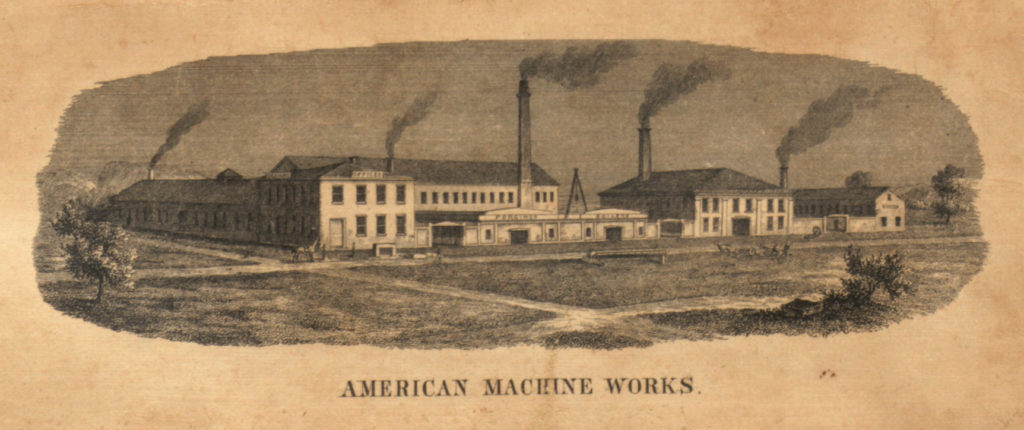
Springfield, Massachusetts
The factory that Tyler built represented the pinnacle of technology at the time, and he boasted about the company’s unique capabilities. In advertisements, he offered “every kind of machinery and millwork made to order.”
The American Machine Works factory was located on the corner of Orleans Street and Tylers Avenue, on a magnificent hill overlooking the growing city of Springfield.
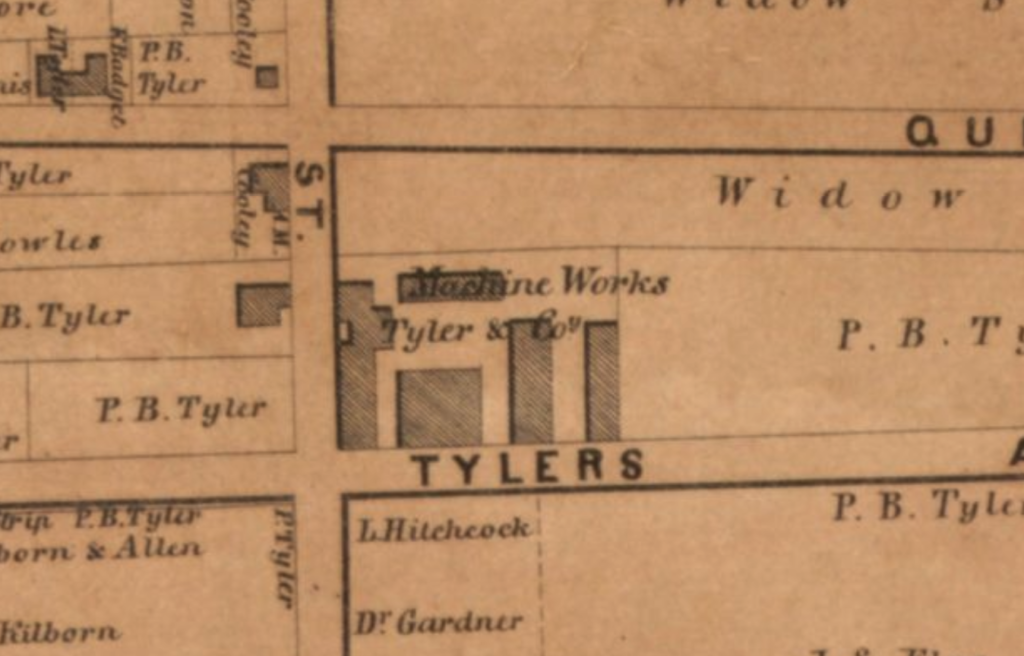
By 1855, the American Machine Works was thriving, and the factory had been expanded to span the entire length of the Orleans Steet block from Quincy Street to the north (labeled “Brooks Avenue” on the map below) and Tyler Avenue to the south.
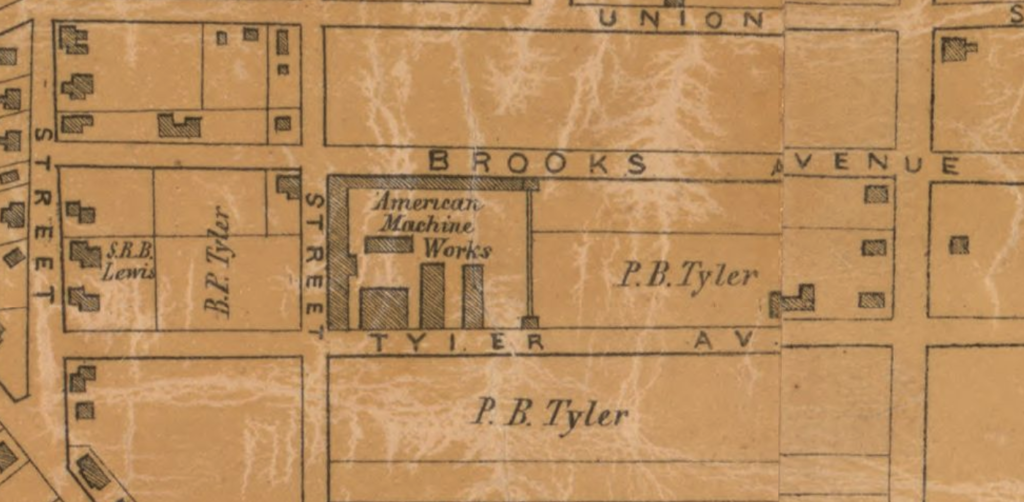
It was this factory, explicitly designed to produce precision machinery, that became very attractive to a watch manufacturing operation looking for a location.
The New York Watch Company
Shortly after the close of the Civil War, a group of investors began exploring the possibility of reorganizing the defunct Mozart Watch Company and moving to a new location.
In 1867, the New York Watch Company was incorporated, and the group purchased the American Machine Works factory in Springfield. The factory buildings occupied by the New York Watch Company can be seen depicted on F.W. Beers’ 1870 Map of Springfield.
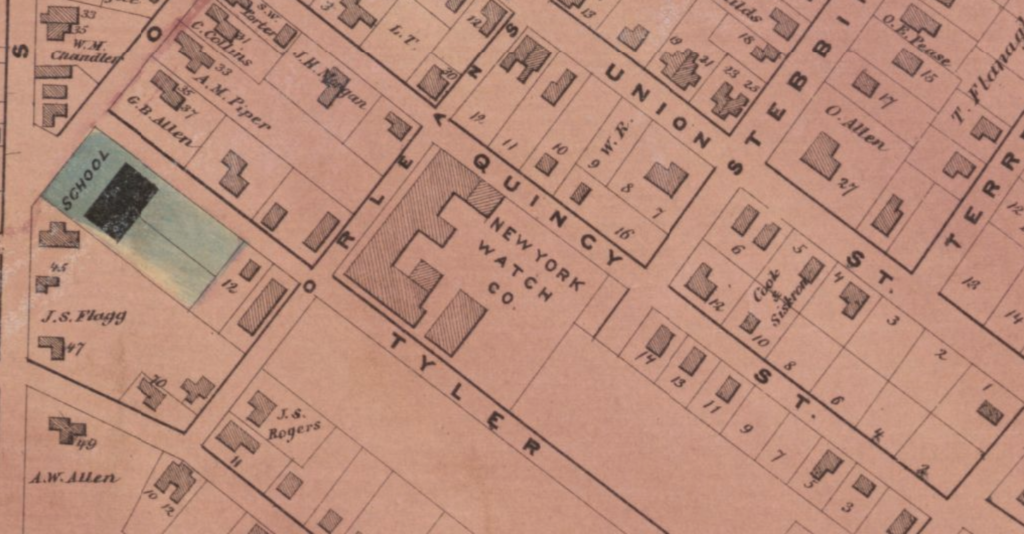
1870 Map of the city of Springfield Massachusetts by F.W. Beers
An engraving published in The Watch Factories of America by Henry G. Abbott illustrates the improved factory structures at the factory around 1870.
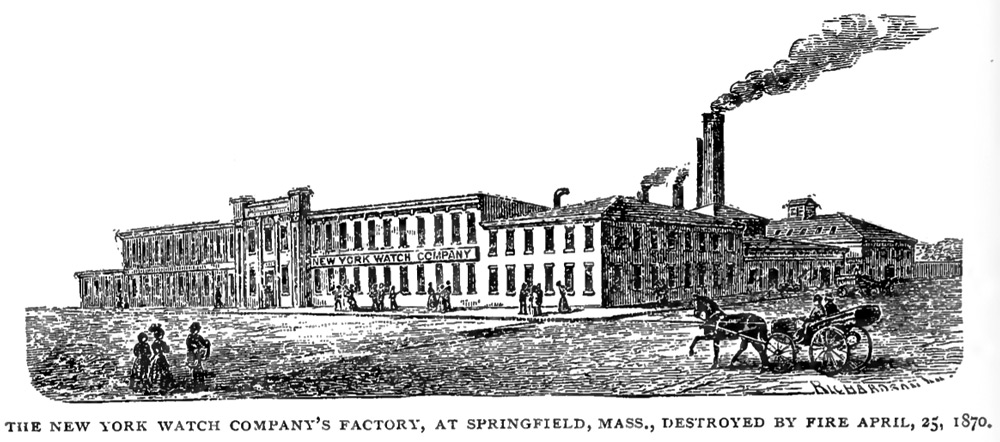
(Looking Northeast, Corner of Orleans and Tyler)
The Watch Factories of America, 1888
Note: The factory fire occurred on April 27, 1870, despite the erroneous information indicated by the image caption
Destruction by Fire
Sadly, misfortune was often attracted to young watch companies. On April 27, 1870, a fire broke out at the New York Watch Company factory. The company had recently installed a new furnace in the main building to facilitate the baking of watch dials. The minor fire sparked in this department initially appeared to be a manageable accident. However, a faulty fire hose and an improper control strategy ultimately led to the inferno consuming the factory.
The incident occurred in the afternoon, so superintendent J.C. Perry was able to enlist the help of many citizens to assist by moving material and machinery away from the fire. As a result of this quick action and goodwill, the company was able to survive, despite losing the main factory building.
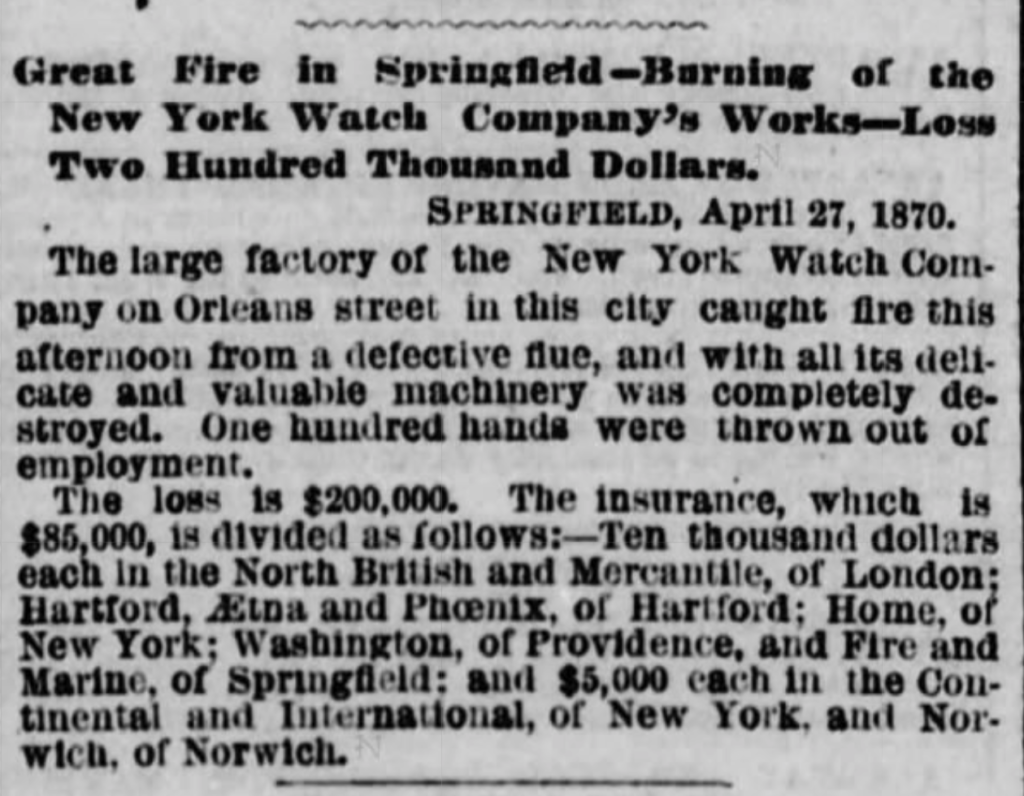
NEW YORK, NEW YORK
Thursday, April 28, 1870
Recovery & Rebuilding
According to Henry G. Abbott in The Watch Factories of America, the main factory building was demolished after the fire, and the boarding house was remodeled to accommodate the machinery. Within a few months, the improvised factory was producing watch movements once again.
The company immediately commenced work on a new factory building adjacent to the exiting structure along Tyler Street. This iteration of the New York Watch Company factory is illustrated in the 1875 O.H. Bailey & Co. Springfield, Massachusetts City Map.

While the company limped along for a few years, the challenges were too significant to overcome. The Financial Panic of 1873 and declining sales forced the New York Watch Company to cease production in April 1875. The factory sat without much activity for over a year until the company was reorganized as the New York Manufacturing Company.
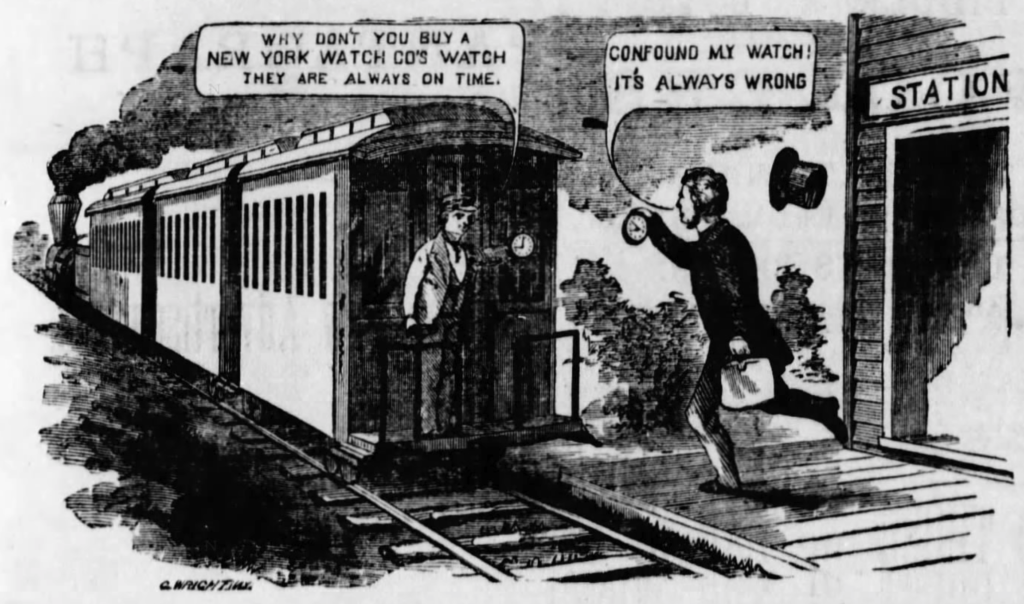
BLOOMINGTON, ILLINOIS
Saturday, May 29, 1875
The Hampden Watch Company
The newly-formed New York Watch Manufacturing Company did not exist for long. In June 1877, the company was reorganized as the Hampden Watch Company.
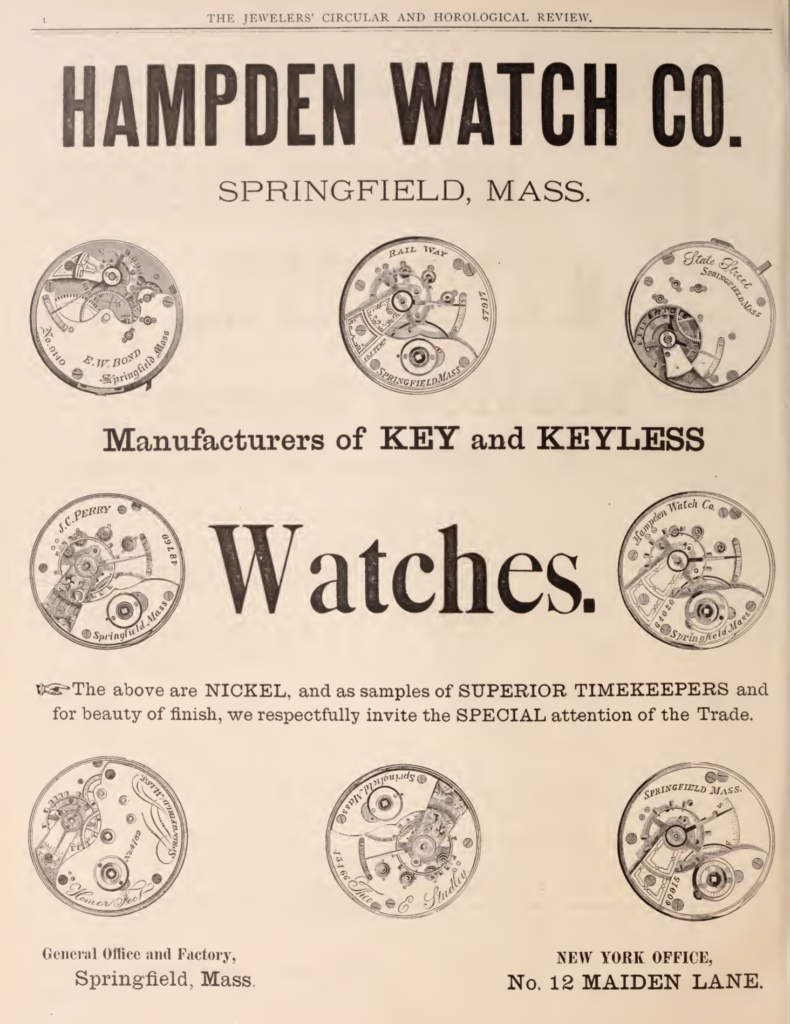
The Jewelers’ Circular and Horological Review, 1878
The factory buildings from the old New York Watch Company were used to restart production. The 1882 George H. Walker Atlas shows the footprint of the factory during this era. The boarding house from the original American Machine Works factory can be seen fronting Tyler Street, and a newer factory building is set to the east.
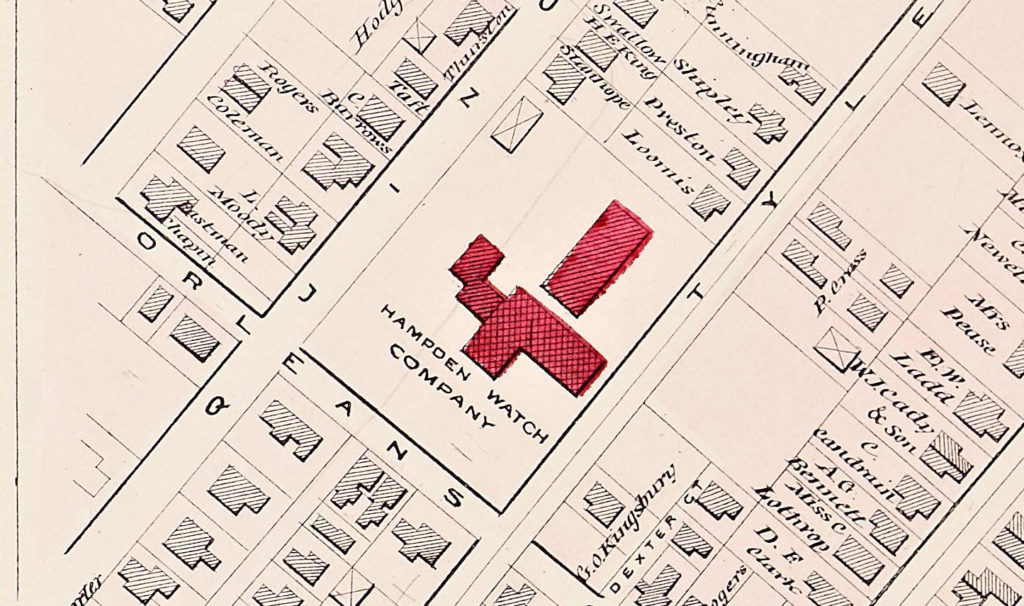
Shortly after this map was published, a large 3-story brick building was erected to expand the manufacturing operations at the cost of $28,000. In November 1882, this new structure became the primary factory building, housing departments for plate, escapement, jeweling, and assembly operations.

Abbott describes the entirety of the company property in The Watch Factories of America, published in 1888:
“Five buildings were then used by the company, the main one being 30×120 feet, brick, three stories and basement, and has a central tower. The other buildings are respectively 33×50, 40×100, 45×90 and 40×80… The power is furnished by a ninety-horse power engine, situated in a building back of the main structure.”The Watch Factories of America, 1888
Henry G. Abbott
The engraving of the Hampden Watch Company factory printed on the back cover of the 1883 Hampden Material catalog matches Abbott’s description.

1883 Hampden Watch Material Catalog
However, the 1886 Sanborn Fire Insurance Map for Springfield, Massachusetts conflicts with this description and illustration while providing important detail related to the factory buildings and functions of the Hampden Watch Company.
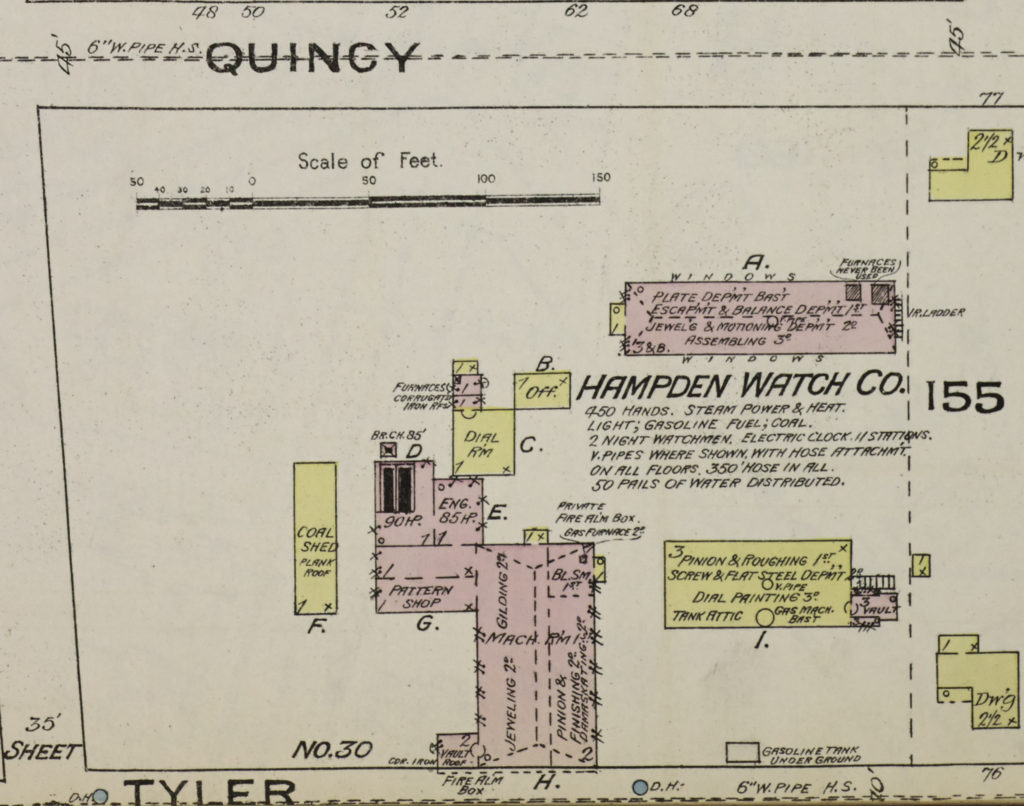
According to the 1886 diagram, only the east wing of the main factory building had been completed, contrasting the elegant depiction in the factory engraving.
In King’s Handbook of Springfield, published in 1884, the author provides a colorful description of the Hampden Watch Company factory and details regarding the main building:
“The plant is located on Armory Hill, covering several acres. The four large buildings are complete in every respect. The main structure is of brick, three stories in height, with a basement. It is finished entirely with hard woods, sheathed with ash, cherry trimmings, and floors of maple, while the work-rooms are supplied with cherry work-benches 2 inches thick. The windows are large, giving ample light to the manufactory. The dimensions of the building are 30 by 120 feet; and to this a fifth is to be added of the same size and architecture, with a tower between the two, 60 by 60 feet, and four stories high.”King’s handbook of Springfield, Massachusetts
Moses King
The measurement for the main building that King provides matches the measurements described by Abbott. However, King indicates only half of the main building had been completed at the time. The plan was to construct an additional structure of the same size, with a tower in between. It appears that the magnificent factory building conveyed in the engraving was a rendering of how the full building would appear once complete. In reality, the factory extension was never completed before John C. Dueber came into the picture.
Using this information, in combination with the crucial data provided by the 1886 Sanborn Fire Insurance Maps, we can accurately identify the structures and the various departments as the factory appeared in 1886.

Springfield, Massachusetts
The Hampden Watch Company Move to Canton, Ohio
In 1886, John C. Dueber purchased a controlling interest in the Hampden Watch Company. To establish a dominant watch-making operation, Dueber moved the Hampden Watch Company to Canton, Ohio to join the Dueber Watch Case Company.
In November 1891, the Hampden Watch Company factory in Springfield was sold to the National Papeterie Company. The existing factory buildings were retained while a new building was built near the corner of Orleans and Quincy.
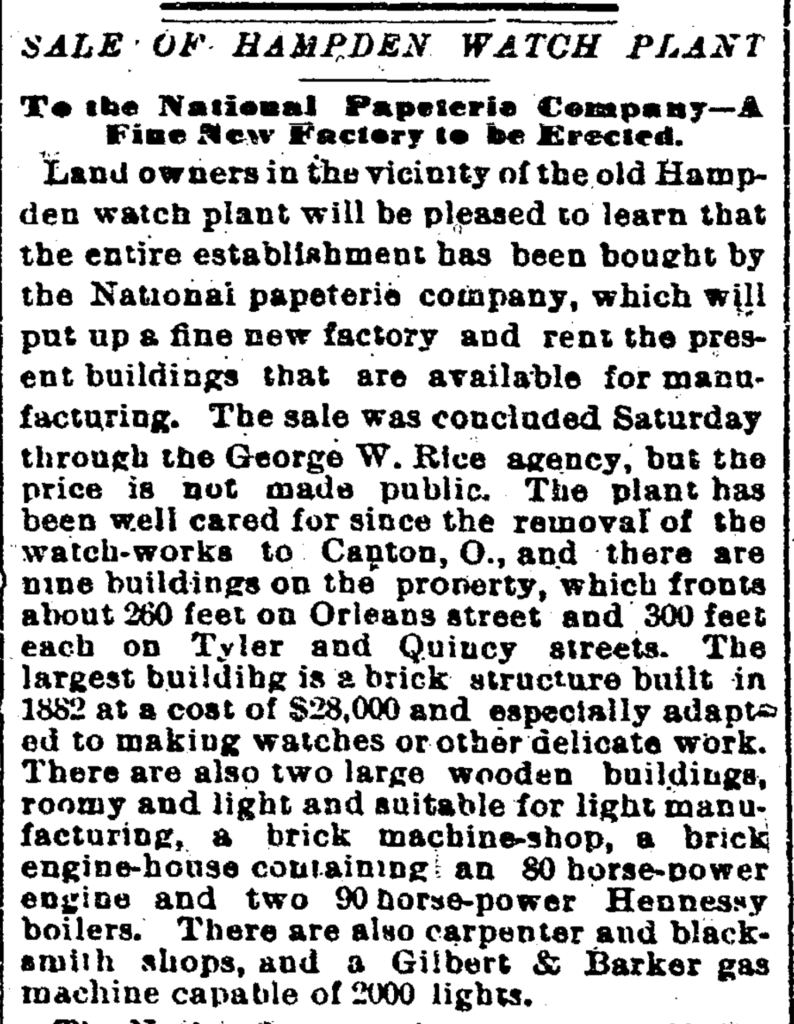
Monday November 30, 1891
The National Papeterie Company Era
By 1896, The National Papeterie Company had expanded the factory footprint with a new factory building. The original factory buildings used by the watch company were leased to the Fast Color Eyelet Company, Rush Cutlery Company, and Blake Manufacturing Company.
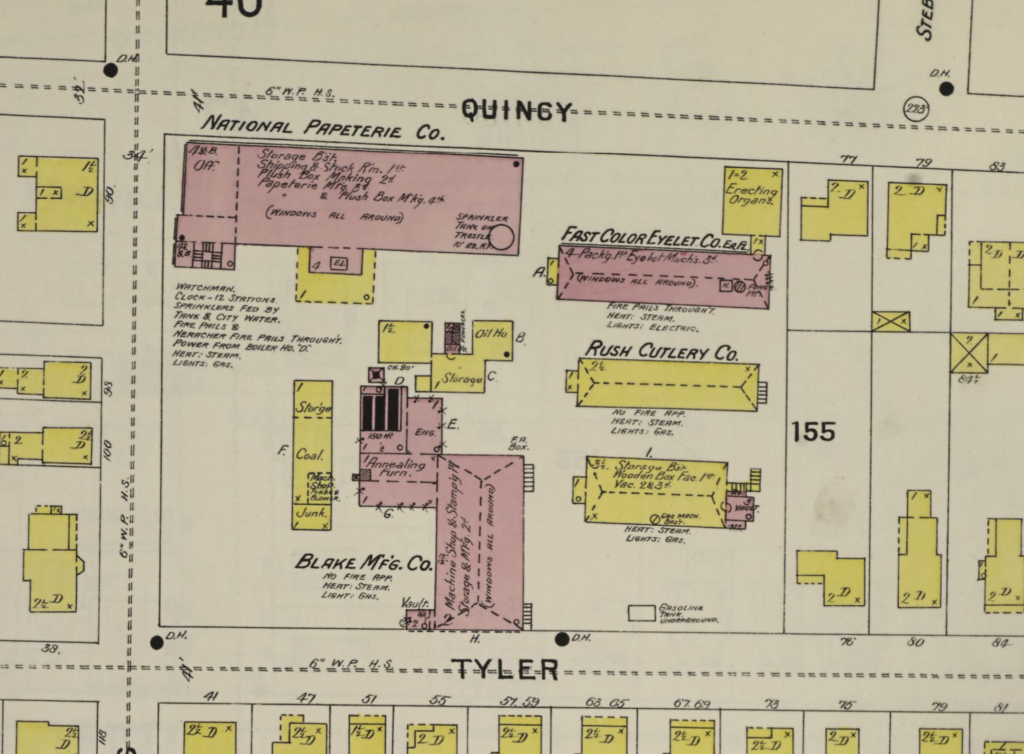
This engraving, published in the volume Picturesque Hampden, depicts the National Papeterie Company, on the corner of Quincy Street and Orleans Street. The original factory buildings of the Hampden Watch Company are visible in the background of the scene.
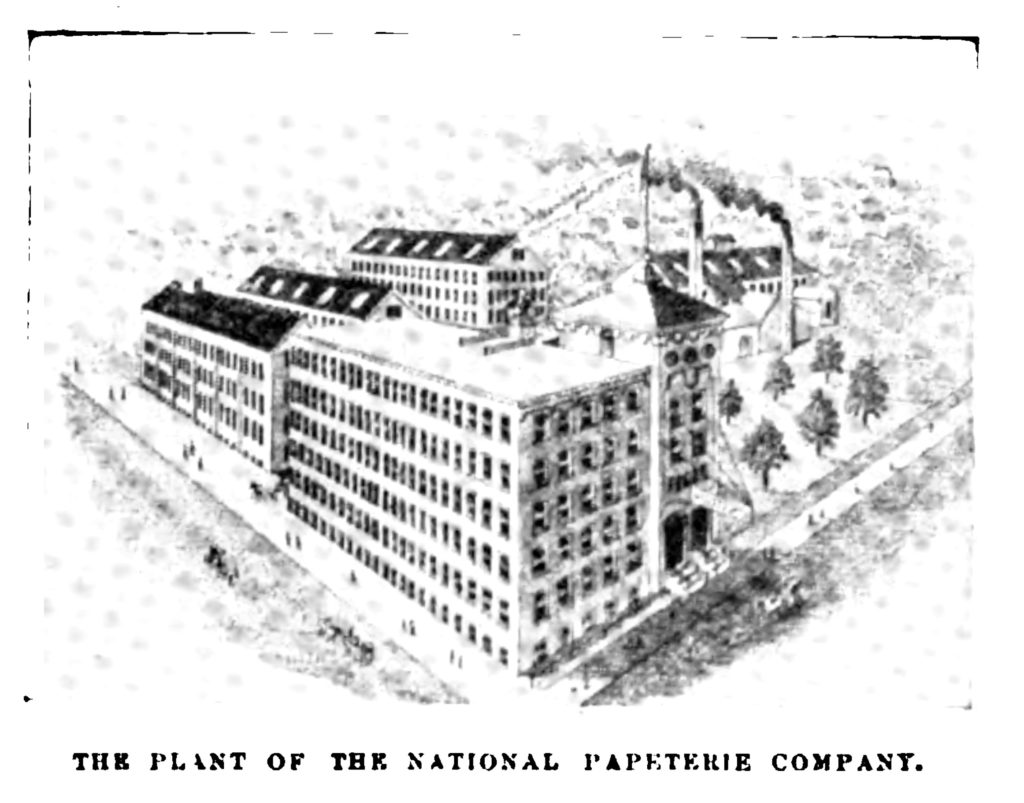
By 1911, the National Papeterie Company had expanded their company to utilize the third floor of the main watch factory building and created a passage between the two structures. The lower floors of the building were leased to the Newell-Putnam Manufacturing Company.
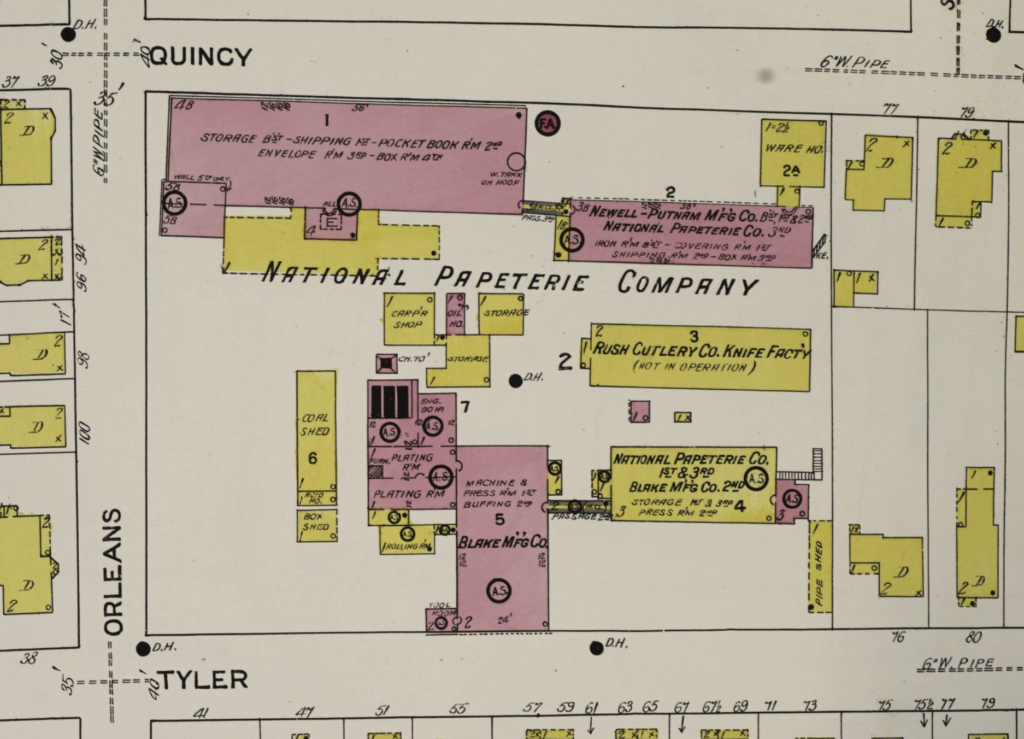
Modern Day
As the city of Springfield transitioned into the modern era, the aging factory buildings became a hindrance to population growth in the area.
Eventually, the factory buildings were demolished, and the property was rezoned. Today, the property, once occupied by some of the most innovative manufacturing operations in the 1800s, has been transformed into a residential block. The homeowners of which are likely oblivious of the untold history beneath their foundations.



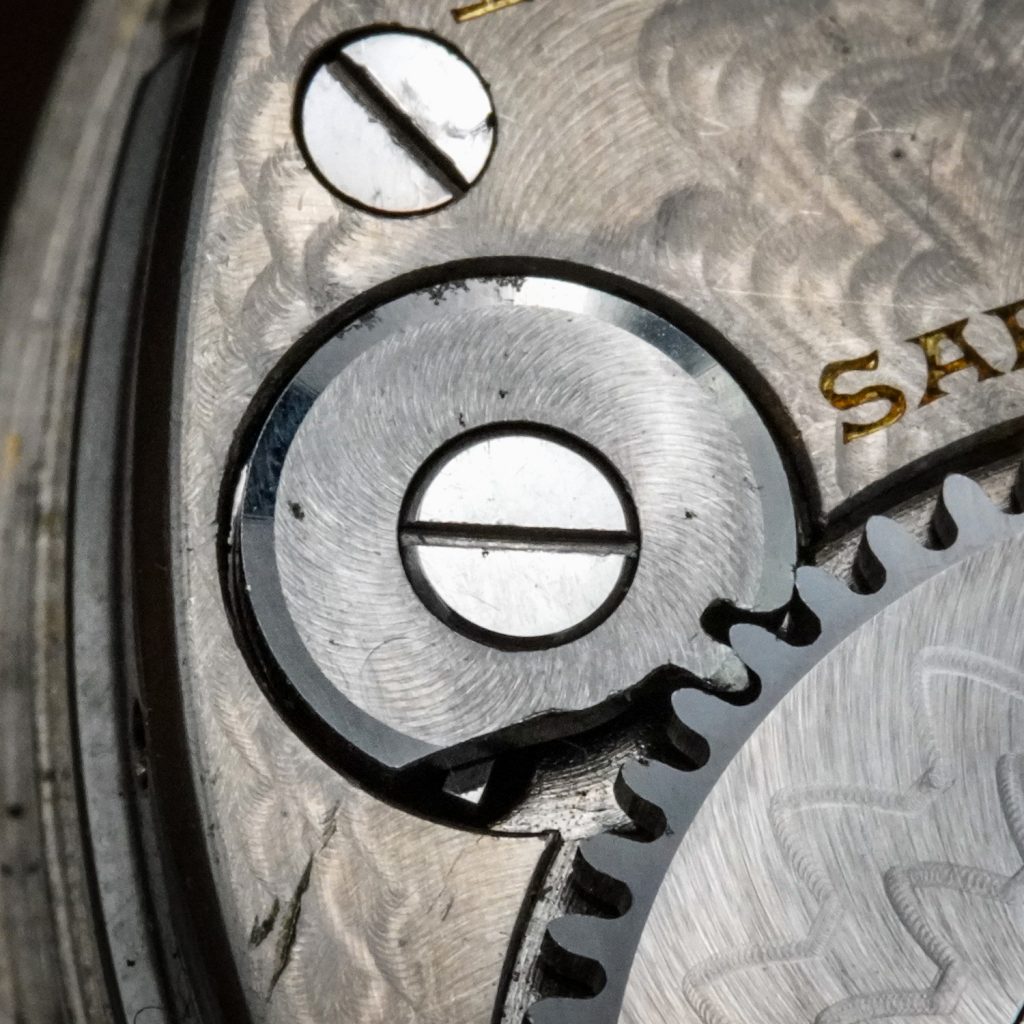
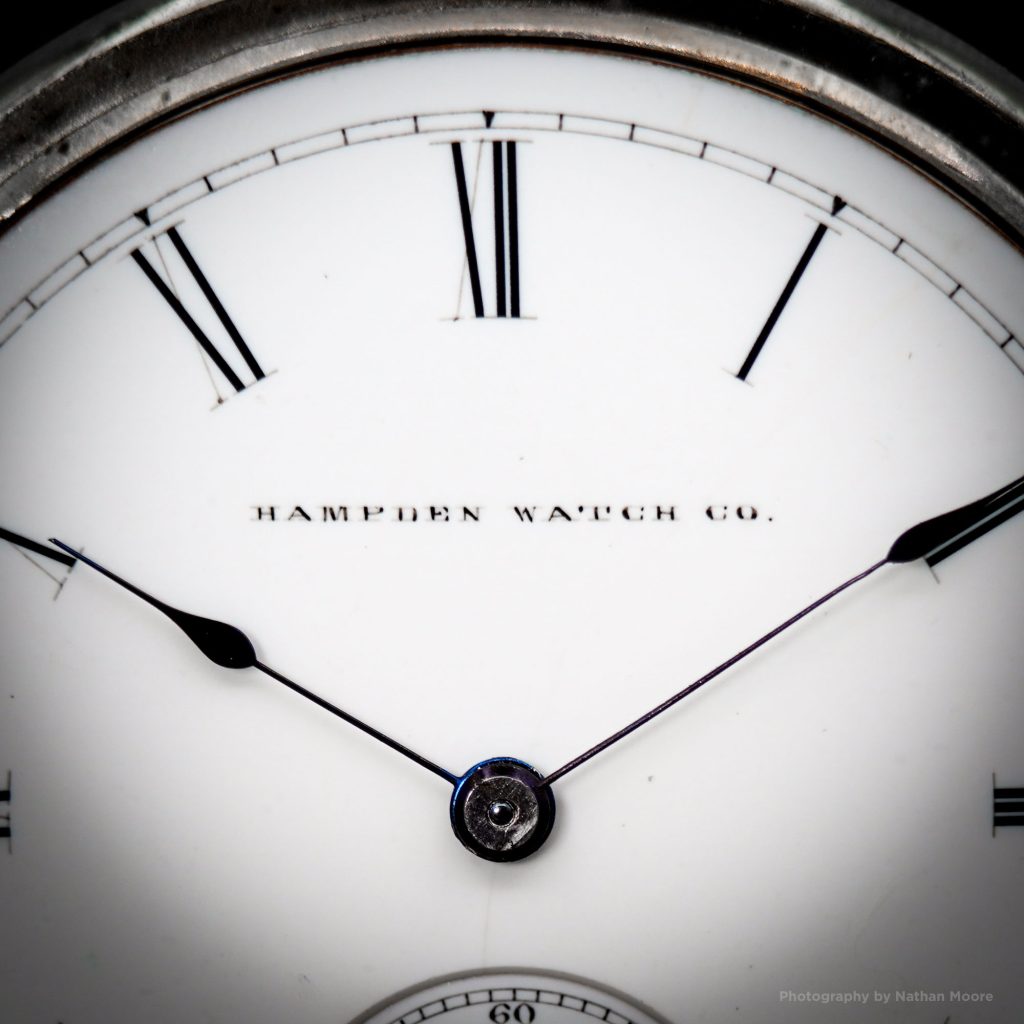

I love reading your short articles on watchmaking and all its facets, companies, and histories.
Keep up the great researching, which I have neither the time nor the ability to do.
Thanks, Bob. I am happy to hear that you enjoy the articles. More to come.